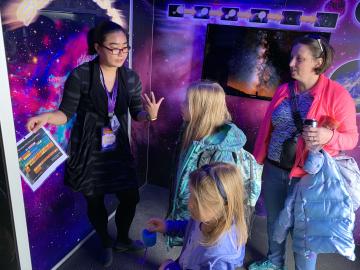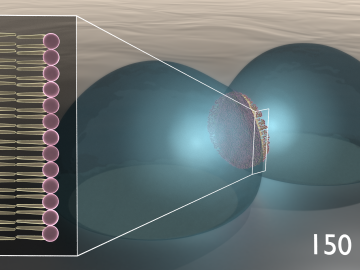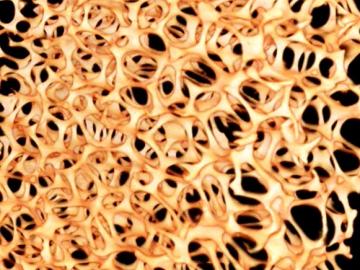
Filter News
Area of Research
- Advanced Manufacturing (7)
- Biological Systems (1)
- Biology and Environment (4)
- Building Technologies (1)
- Clean Energy (61)
- Climate and Environmental Systems (2)
- Computational Engineering (1)
- Computer Science (8)
- Fusion and Fission (1)
- Fusion Energy (6)
- Isotopes (1)
- Materials (57)
- National Security (7)
- Neutron Science (24)
- Nuclear Science and Technology (11)
- Quantum information Science (3)
- Supercomputing (31)
- Transportation Systems (1)
Date
News Topics
- 3-D Printing/Advanced Manufacturing (28)
- Advanced Reactors (10)
- Artificial Intelligence (34)
- Big Data (17)
- Bioenergy (20)
- Biology (12)
- Biomedical (10)
- Biotechnology (6)
- Buildings (13)
- Chemical Sciences (14)
- Clean Water (8)
- Climate Change (20)
- Composites (6)
- Computer Science (55)
- Critical Materials (4)
- Cybersecurity (5)
- Decarbonization (21)
- Education (1)
- Emergency (1)
- Energy Storage (17)
- Environment (38)
- Exascale Computing (7)
- Fossil Energy (3)
- Frontier (8)
- Fusion (11)
- Grid (12)
- High-Performance Computing (14)
- Isotopes (12)
- ITER (1)
- Machine Learning (14)
- Materials (14)
- Materials Science (35)
- Mathematics (3)
- Mercury (1)
- Microelectronics (1)
- Microscopy (7)
- Molten Salt (1)
- Nanotechnology (8)
- National Security (15)
- Net Zero (6)
- Neutron Science (28)
- Nuclear Energy (27)
- Partnerships (12)
- Physics (10)
- Polymers (7)
- Quantum Computing (10)
- Quantum Science (22)
- Security (4)
- Simulation (13)
- Space Exploration (7)
- Statistics (2)
- Summit (13)
- Sustainable Energy (25)
- Transportation (24)
Media Contacts

In the vast frozen whiteness of the central Arctic, the Polarstern, a German research vessel, has settled into the ice for a yearlong float.

A joint research team from Google Inc., NASA Ames Research Center, and the Department of Energy’s Oak Ridge National Laboratory has demonstrated that a quantum computer can outperform a classical computer

Jason Nattress, an Alvin M. Weinberg Fellow at the Department of Energy’s Oak Ridge National Laboratory, found his calling on a nuclear submarine.

Scouts from around East Tennessee learned about supercomputing, electricity, isotopes, physics, and much more at Oak Ridge National Laboratory’s final Traveling Science Fair event of 2019

Researchers at the Department of Energy’s Oak Ridge National Laboratory, the University of Tennessee and Texas A&M University demonstrated bio-inspired devices that accelerate routes to neuromorphic, or brain-like, computing.

The U.S. Department of Energy announced funding for 12 projects with private industry to enable collaboration with DOE national laboratories on overcoming challenges in fusion energy development.

Two of the researchers who share the Nobel Prize in Chemistry announced Wednesday—John B. Goodenough of the University of Texas at Austin and M. Stanley Whittingham of Binghamton University in New York—have research ties to ORNL.

ORNL and The University of Toledo have entered into a memorandum of understanding for collaborative research.

The type of vehicle that will carry people to the Red Planet is shaping up to be “like a two-story house you’re trying to land on another planet.

Researchers at Oak Ridge National Laboratory demonstrated that metal foam enhances the evaporation process in thermal conversion systems and enables the development of compact HVAC&R units.


